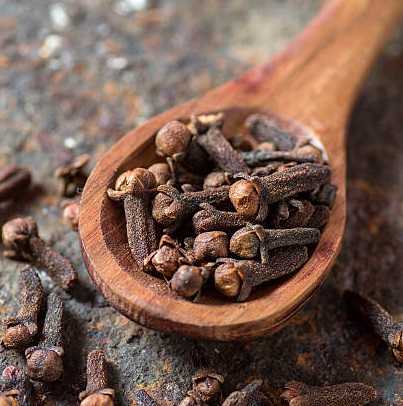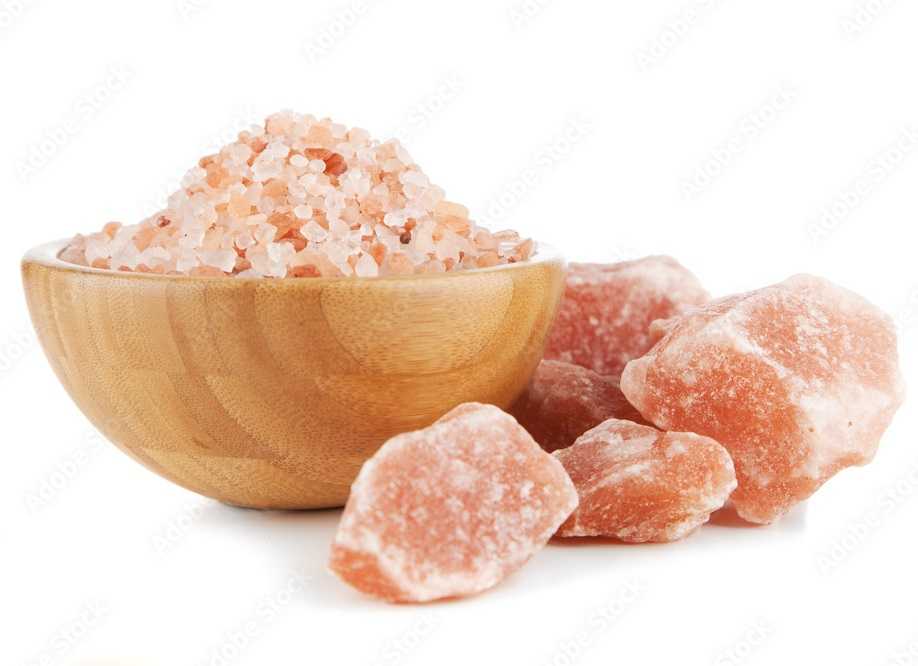Blog
Ayurved

Ayurveda is considered by many scholars to be the oldest healing science. In Sanskrit, Ayurveda means “The Science of Life.†Ayurvedic knowledge originated in India more than 5,000 years ago and is often called the “Mother of All Healing.†It stems from the ancient Vedic culture and was taught for many thousands of years in an oral tradition from accomplished masters to their disciples. Some of this knowledge was set to print a few thousand years ago, but much of it is inaccessible.Ayurveda places great emphasis on prevention and encourages the maintenance of health through close attention to balance in one’s life, right thinking, diet, lifestyle and the use of herbs. Knowledge of Ayurveda enables one to understand how to create this balance of body, mind and consciousness according to one’s own individual constitution and how to make lifestyle changes to bring about and maintain this balance. Just as everyone has a unique fingerprint, each person has a particular pattern of energy—an individual combination of physical, mental and emotional characteristics—which comprises their own constitution. This constitution is determined at conception by a number of factors and remains the same throughout one’s life. Many factors, both internal and external, act upon us to disturb this balance and are reflected as a change in one’s constitution from the balanced state. Examples of these emotional and physical stresses include one’s emotional state, diet and food choices, seasons and weather, physical trauma, work and family relationships. Once these factors are understood, one can take appropriate actions to nullify or minimize their effects or eliminate the causes of imbalance and re-establish one’s original constitution. Balance is the natural order; imbalance is disorder. Health is order; disease is disorder. Within the body there is a constant interaction between order and disorder. When one understands the nature and structure of disorder, one can re-establish order.
Turmeric

Turmeric is a deep, golden-orange spice known for adding color, flavor and nutrition to foods. A relative of ginger, turmeric comes from the rhizome (root) of a native Asian plant and has been used in cooking for hundreds of years. It has also been used in ayurvedic and other forms of traditional medicine in China and India. Mary-Eve Brown, an oncology clinical dietitian/nutritionist at Johns Hopkins Medicine, provides information on health benefits of turmeric, how to use it in your cooking and two recipes that feature the spice. What is turmeric good for? Brown explains that the active ingredient in turmeric is a natural compound (polyphenol) called curcumin, which has both antioxidant and anti-inflammatory properties. “Curcumin has many biological activities, not all of which are understood,” Brown says. “Like other colorful plant-based foods, turmeric is rich in phytonutrients that may protect the body by neutralizing free radicals (pollution, sunlight) and shielding the cells from damage.” Diets rich in plant-based foods are associated with prevention of medical conditions such as cancer and heart disease. Brown says, “Anyone who’s trying to manage inflammation could benefit from adding some turmeric to their foods.” She cites inflammatory conditions such as arthritis and other joint disorders, colitis, allergies and infections. Science Behind Turmeric Turmeric and its components, including curcumin, have been the subject of scientific studies. “Some research results show that people who have osteoarthritis reported less joint pain when eating turmeric in recipes,” Brown says. “Turmeric’s effect on mood disorders, depression and dementia have also been explored, but studies are small, so more research will reveal if there is a benefit.”
Triphala Churna? Triphala Churna is an ancient Ayurvedic herbal formulation made from three powerful fruits: Amla (Emblica officinalis) – Rich in Vitamin C, boosts immunity. Haritaki (Terminalia chebula) – Aids digestion and detoxification. Bibhitaki (Terminalia bellirica) – Supports respiratory and gut health. It is widely used in Ayurveda for digestion, detoxification, immunity, and overall well-being. Mention of Triphala in Ayurvedic Texts Triphala is described in several classical Ayurvedic texts, including: 1. Charaka Samhita (Chikitsa Sthana 1.3.29) ??????? ?????????????? ????????? ????? ????? ?????? ??????? ? ?????? ? ????????? Translation: Triphala helps balance Vata and Kapha doshas, improves eyesight, enhances digestion, acts as a rejuvenator (Rasayana), and purifies the body. 2. Sushruta Samhita ?????? ?????? ??? ??????? ???????????? ?????? ?????? ??????? ?????? ???? ????????? Translation: Triphala nourishes the body, strengthens immunity, and cures multiple diseases when consumed regularly. Benefits of Triphala Churna Triphala Churna is a powerful Ayurvedic herbal powder made from three fruits: Amla (Indian Gooseberry), Haritaki (Chebulic Myrobalan), and Bibhitaki (Beleric Myrobalan). It is known for its numerous health benefits: Improves Digestion – Helps in better digestion, relieves constipation, and supports gut health. Detoxifies the Body – Acts as a natural detoxifier, flushing out toxins from the body. Boosts Immunity – Rich in Vitamin C and antioxidants, strengthening the immune system. Supports Weight Loss – Aids in metabolism and helps in weight management. Enhances Eye Health – Beneficial for improving vision and reducing eye strain. Promotes Skin & Hair Health – Reduces acne, delays aging, and strengthens hair roots. Regulates Blood Sugar – Helps in maintaining healthy blood sugar levels. Supports Heart Health – Reduces cholesterol and keeps blood pressure in check. Anti-Inflammatory Properties – Reduces inflammation and helps with joint pain. Improves Oral Health – Prevents bad breath, gum infections, and strengthens teeth.
Clove

The Wonders of Clove: A Tiny Spice with Immense Benefits Clove, a small yet powerful spice, has been cherished for centuries for its medicinal, culinary, and aromatic properties. Derived from the dried flower buds of the Syzygium aromaticum tree, cloves are native to Indonesia but are widely used across the globe. This tiny spice packs a punch with its unique flavor, strong aroma, and incredible health benefits. A Brief History of Clove Cloves have a rich history, dating back to ancient times. They were highly prized in China, India, and the Middle East for their medicinal and culinary uses. During the spice trade era, cloves were so valuable that they were even used as currency. European explorers, including the Portuguese and Dutch, played a significant role in expanding clove cultivation to other parts of the world. Health Benefits of Clove Cloves are more than just a spice; they are packed with essential nutrients, antioxidants, and medicinal properties that promote overall well-being. Here are some key health benefits of cloves: 1. Powerful Antioxidant Properties Cloves are rich in antioxidants, which help combat oxidative stress and reduce the risk of chronic diseases. These antioxidants protect cells from damage caused by free radicals and support overall health. 2. Aids Digestion Cloves stimulate the secretion of digestive enzymes, improving digestion and reducing bloating, indigestion, and nausea. They also help relieve gastric irritation and promote gut health. 3. Natural Pain Reliever Clove oil is widely used as a natural remedy for toothaches and sore gums. It contains eugenol, a compound with anti-inflammatory and anesthetic properties that help relieve pain and inflammation. 4. Supports Respiratory Health Cloves have antibacterial and antiviral properties, making them beneficial in treating respiratory infections such as cough, cold, and bronchitis. Clove tea or clove-infused steam can help clear nasal congestion and soothe sore throats. 5. Improves Oral Health Due to their antimicrobial properties, cloves are commonly used in oral care products like toothpaste and mouthwash. They help combat bad breath, kill harmful bacteria, and maintain overall oral hygiene. 6. Regulates Blood Sugar Levels Studies suggest that cloves may help regulate blood sugar levels by improving insulin sensitivity. This makes them beneficial for individuals managing diabetes or looking to maintain balanced glucose levels. 7. Enhances Liver Health Cloves support liver function by promoting detoxification and reducing liver inflammation. Their antioxidant properties help protect the liver from damage caused by toxins and oxidative stress. Culinary Uses of Clove Cloves add a rich, warm, and slightly sweet flavor to various dishes. They are commonly used in: • Spiced teas and masala chai • Curries and stews • Baked goods like cakes and cookies • Pickles and marinades • Traditional Ayurvedic and herbal preparations How to Use Clove in Daily Life • For digestion: Add a few cloves to a cup of tea or chew on one clove after meals. • For oral health: Apply a drop of clove oil to a cotton ball and place it on a toothache. • For respiratory relief: Boil cloves in water and inhale the steam to clear congestion. • For skin care: Mix clove oil with a carrier oil and apply it to acne-prone areas to reduce breakouts. Precautions and Side Effects While cloves offer numerous health benefits, excessive consumption can lead to certain side effects, such as: • Irritation in the mouth or digestive tract • Lowered blood sugar levels (caution for diabetics) • Allergic reactions in sensitive individuals • Potential toxicity if consumed in large amounts Conclusion Clove is a remarkable spice that has stood the test of time, offering both culinary delight and medicinal benefits. Whether used in cooking, as a natural remedy, or in self-care routines, cloves can enhance health and well-being in numerous ways. However, moderation is key to avoiding any adverse effects. Including this tiny but mighty spice in your daily routine can help you harness its incredible benefits for a healthier life.
Sendha Namak

The
Wonders of Rock Salt: A Natural Treasure for Health and Wellness
Rock salt,
also known as Himalayan salt or sendha namak, is a naturally occurring mineral
that has been used for centuries for its health benefits and culinary uses.
Unlike refined table salt, rock salt is unprocessed and retains essential
minerals, making it a healthier alternative. Extracted from ancient salt
deposits, particularly in the Himalayan region, this pinkish crystal is more
than just a seasoning—it is a powerhouse of nutrients.
The
Origin and Composition of Rock Salt
Rock salt
is formed from the evaporation of ancient seawater, creating large salt
deposits beneath the Earth's surface. Mined primarily in Pakistan, India, and
other regions with rich salt reserves, rock salt is known for its distinctive
pink, white, or reddish hues, which result from trace minerals like iron,
calcium, magnesium, and potassium.
Health
Benefits of Rock Salt
Rock salt offers a
multitude of health benefits due to its rich mineral content. Here are some of
the key advantages:
Aids Digestion
Rock salt stimulates the
production of digestive enzymes, improving gut health and preventing issues
like bloating, indigestion, and constipation.
Regulates
Blood Pressure
Unlike refined salt, rock
salt helps maintain electrolyte balance, preventing sudden spikes or drops in
blood pressure.
Supports
Hydration
The natural minerals in
rock salt help maintain the body’s hydration levels by promoting proper fluid
balance.
Improves
Respiratory Health
Rock salt is commonly used
in salt therapy, where inhaling its fine particles helps clear nasal
congestion, reduce asthma symptoms, and improve overall lung function.
Promotes
Skin Health
Rock salt acts as a natural
exfoliant, removing dead skin cells and promoting a healthy glow. It is also
used in baths to detoxify the skin and relax the body.
Boosts
Immunity
The minerals in rock salt
strengthen the immune system by helping the body fight infections and improving
overall vitality.
Culinary
Uses of Rock Salt
Rock salt is a versatile
ingredient used in various cuisines worldwide. Some common uses include:
- Seasoning soups, salads, and
grilled foods
- Enhancing the flavor of pickles
and fermented foods
- Making electrolyte drinks for
hydration
- Used in baking and curing meats
How
to Use Rock Salt in Daily Life
- For digestion:
Dissolve a pinch of rock salt in warm water and drink it before meals.
- For skin care:
Mix rock salt with honey or essential oils to create a natural scrub.
- For respiratory relief:
Use a salt inhaler or add rock salt to hot water for steam therapy.
- For relaxation:
Add rock salt to a warm bath to soothe muscles and detoxify the skin.
Precautions
and Considerations
While rock salt is a
healthier alternative to table salt, excessive consumption may still lead to
health issues such as high sodium levels and water retention. It is essential
to use it in moderation and consult a healthcare professional if you have any
existing health conditions.
Conclusion
Rock salt is a natural
treasure that offers a wide range of health benefits, from improving digestion
to enhancing skin health. Whether used in cooking, skincare, or wellness
routines, this mineral-rich salt can be a valuable addition to your daily life.
By incorporating rock salt mindfully, you can enjoy its numerous advantages
while maintaining overall health and well-being.

